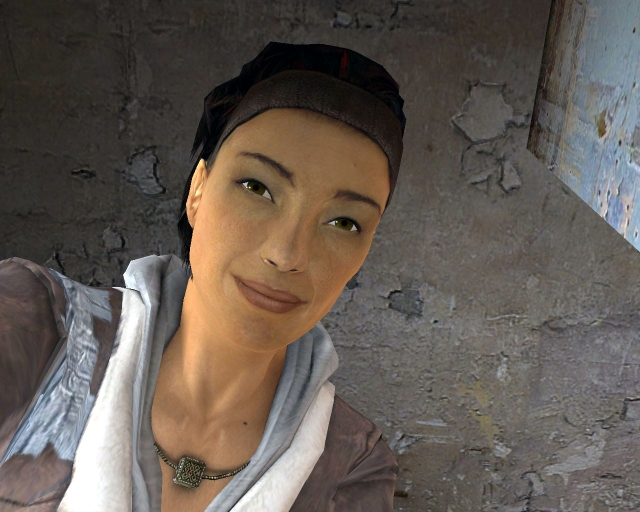|
This is, indeed, where the game starts you up. You peer into the engulfing locations, only to come to the realization that Earth is a post-1984, ominious presence delivering wasteland, completely overtaken by the Combine where the citizens can only wail at their request and where scanners are afloat. Where Dr. Breen goads onto things being ‘okay’ and a welcome to boot. Where the vistas of DirectX 9 Shader Model 2.0 can be seen via the Source Engine. Nonetheless, you know not all is okay from the getgo; it becomes apparent. Yet, once again, you’re Gordon Freeman – you’re the hero that, courtesy of the G-Man, has fallen into this realm, to, once again, save the world by large. Did I mention it’s also a run-down ‘urban center’ ?
Nevertheless, the game initially takes you into a few rather well-scripted sequences, where ubiquitous patrol ‘metrocops’ are out there to make sure you do what they would want you to do; like every other citizen, be oblivious to the fact that Dr. Breen is nothing more than a business man and a human puppet to carry out their reign and to establish the Earth as the Combine’s. Again, the game does this well – everything, from the dynamic, high and low frequency doppler ambient WAV/MP3 sounds in VALVe Software’s own sound shader API that shuns EAX (or any other sound API of the same realm) to the Havoc Ragdoll physics system, exploiting minute details, like the meals blowing across the ground or from the realistic movements of NPCs as their eyes twitch and they turn their glances around in apprehension.
After that, it’s not long before combat begins, where the immersion and cut-sceneless (if that’s a word?) nature of the original, in nature, plus the wonders of the Source Engine and the sweeping locations and nature of City 17 (and Nova Prospect, and what have you) in Europe reveal themselves. From Kliener’s lab to the banks of sand and the fresnel-reflection boasting ocean of Highway 17, the game retains the nature of the original without fail while simultaneously adding in its own distinct formula; it’s as fast paced and as adrenaline-pumping as the original without even being a tad excessive; no joke. The weapons also feel beefy; from the pulse rifle to the magnum to the spore (which are rather handy on the supposed enemies that are Antlions). Which brings me, to, the NPCs…

The NPCs’s facial animation skeletal bone structure system (which seems to be a combination of both key-frame, hand, and Havoc Ragdolls) in itself makes the NPCs seem so… not artificial that it’s unsettling, in a very good way. From Alyx knocking out a few Combine in a whitening flash to rather subtle human touches to many of the scripted sequences (once the game finally settles into a formula of physics puzzle solving, run-n’ gun action, revealing the story bit by bit, seeing familiar faces, and scripted sequences that show how far VALVe have come) to Dr. Kliener on a splurge to find ‘Lamar’ (his ‘pet headcrab’), to Dog being as ‘out there’ as he always is, the game boasts a very human-like quality that even surpasses the original by a certain amount at that. There’s a certain self-shadowing model and gleam in the character’s eyes (courtesy of Shader Model 2.0, again, and not even 3.0, as well as VALVe’s own devices) that denote a certain realism factor that makes it all the more plausible. A very wide range of emotion is captured in that, and it’s done in a way not done before. And that doesn’t go without saying the voice acting is superb; the voice overs, including the G-Man’s, Barney’s, Eli Vance's, Alyx’s, Mossman's, and even Dr. Breen (what with Vas such as Robert Culp, in this circumstance) know how to get into their character and certainly sound human, which is the exact quality much needed to their character.
INTRODUCTION PAGE
DELVING DEEPER INTO CITY 17
THE CRUX
|